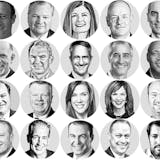After an outcry from state leaders and consumer advocates, Xcel Energy has backed off from its plan to charge Minnesota customers higher electric rates during peak times unless they opt out.
Instead, the utility says it will make its program voluntary and proposed other changes designed to make it more appealing to ratepayers.
Attorney General Keith Ellison’s office said an Xcel pilot program testing the strategy produced “meager” results and did not achieve its goal of reducing electricity use when demand is highest. Many public commenters said they could not change their energy use to avoid higher prices.
Xcel’s plan also would have been a national outlier for the wide price gap between the most expensive peak rates and cheaper off hours, according to California-based energy and rate design economist Ahmad Faruqui.
Faruqui said Thursday he was “stunned” the original plan would subject customers to a “skyrocketing” price during the evenings.
“It looks like they have made a very major concession here to public opinion,” Faruqui said. “Which is really amazing because most utilities dig their heels in, for better or for worse.”
Xcel wanted to enroll residential customers automatically in “time of use” rates, a dynamic pricing scheme gaining traction across the country. The Minnesota Public Utilities Commission (PUC) in 2018 asked Xcel to come up with a plan for default time-of-use rates after finishing its pilot.
Now, Xcel wants to let customers voluntarily enroll in time-of-use rates instead of requiring people to opt out. Xcel also lowered prices during peak hours and shortened the time frame when rates would be the most expensive.


